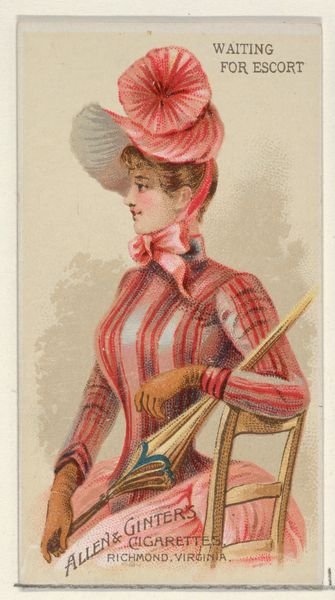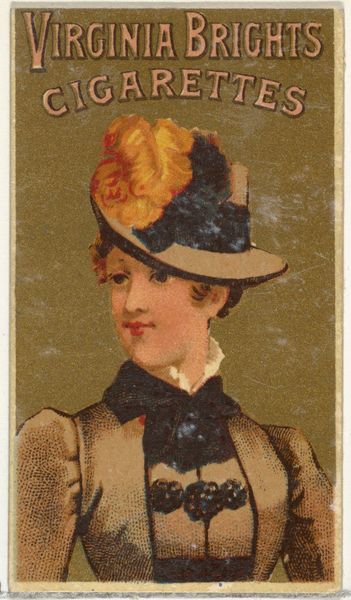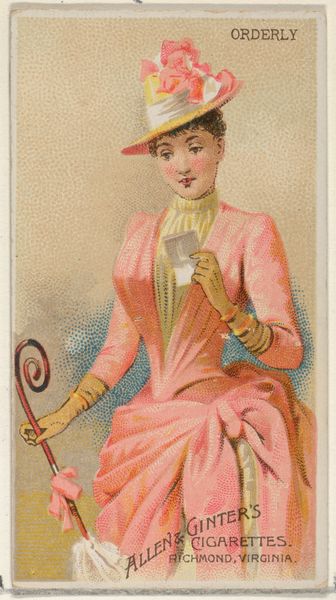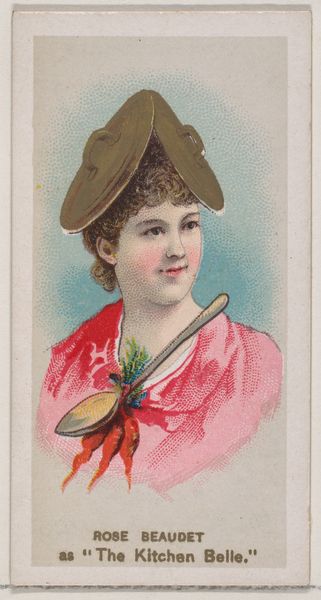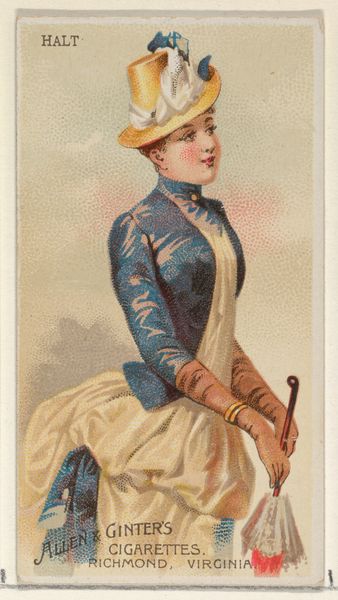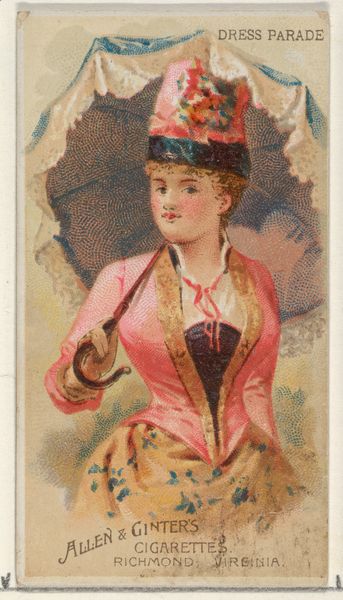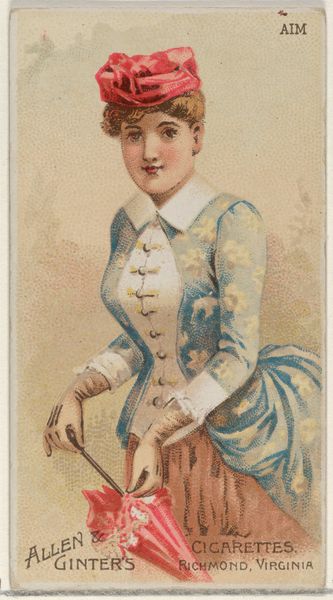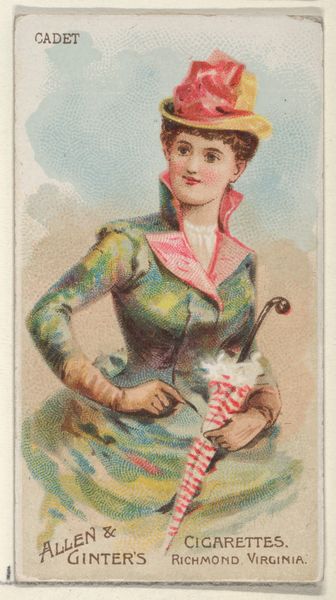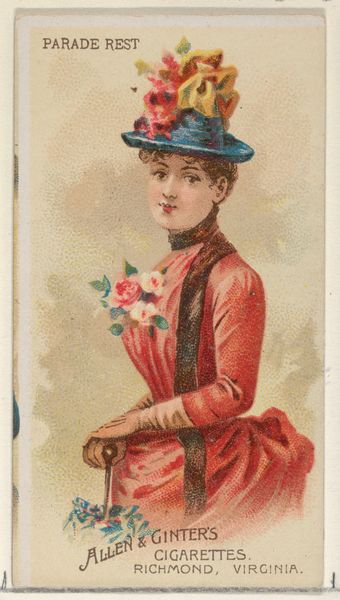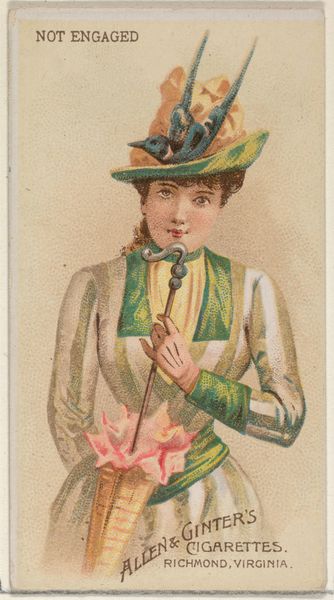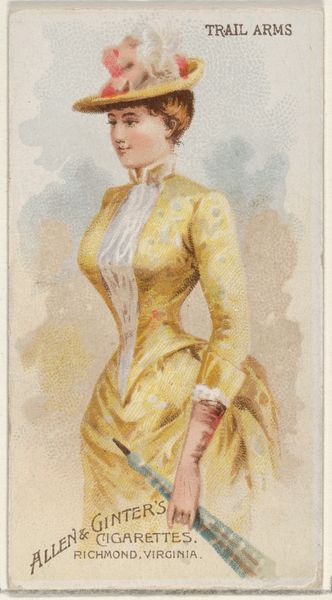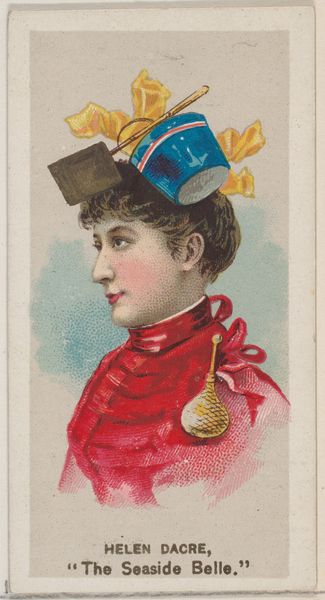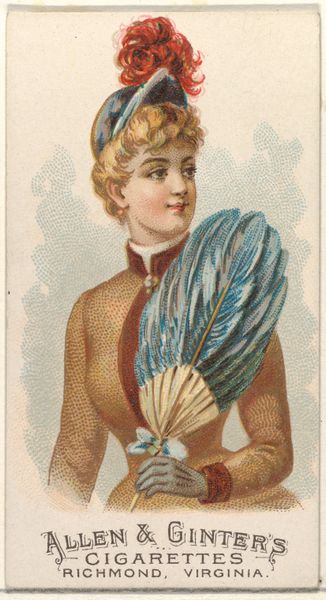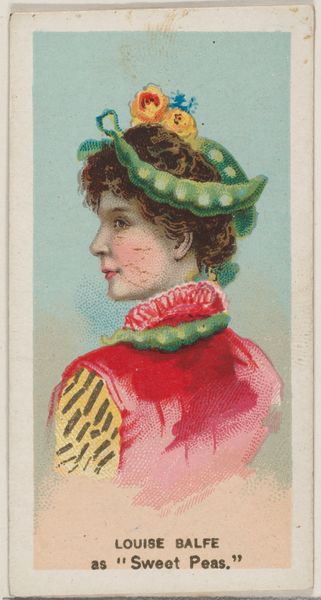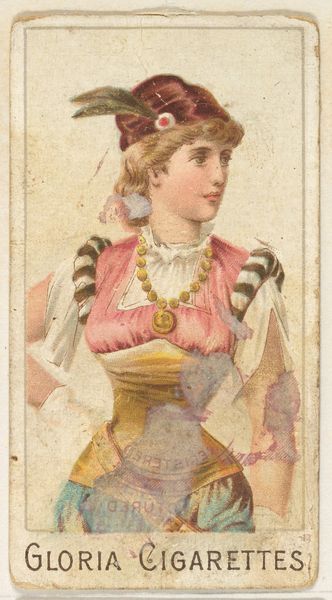
Eyes Left, from the Parasol Drills series (N18) for Allen & Ginter Cigarettes Brands 1888
0:00
0:00
drawing, coloured-pencil, print
#
portrait
#
drawing
#
coloured-pencil
# print
#
impressionism
#
caricature
#
figuration
#
coloured pencil
#
coffee painting
#
19th century
#
men
#
genre-painting
Dimensions: Sheet: 2 3/4 x 1 1/2 in. (7 x 3.8 cm)
Copyright: Public Domain
Editor: Here we have "Eyes Left, from the Parasol Drills series (N18)," created in 1888 by Allen & Ginter. It's a colour print, and I find its old-fashioned charm quite striking. What draws your eye? Curator: Immediately, the method of its creation. This wasn't intended for a museum, but as part of a commercial project. Allen & Ginter weren’t aiming for high art. These cards were included in cigarette packs. It prompts questions about the social consumption of images and the blur between art and advertising. Were these mass-produced prints seen as disposable, or did they hold some value for collectors? Editor: That's a perspective I hadn’t considered. The card itself is the art object and the advertisement, almost intertwined. Did the artists at Allen & Ginter view their work as "art" at the time, or was it purely a means of production? Curator: Exactly! We have to consider the conditions of labor. These images are commodities produced within a capitalist system. The artists were likely anonymous, their labor contributing to a larger commercial goal. Also consider how women were represented and consumed within this economy. Editor: The parasol is interesting—is that part of it as well? Curator: Yes! This speaks to a particular social status. The parasol wasn't just functional; it was a signifier of wealth, and availability for potential suitoring – or perhaps protection from it. The garment, too. And if cigarette cards themselves held value, perhaps they gave some working-class consumers a sense of sophistication otherwise unavailable. Editor: So, examining the materials – the colored print – along with its original commercial function, gives us a whole new understanding. Curator: Precisely. By exploring the intersection of commerce, labor, and social context, we see how art objects participate in broader systems of value and meaning. Editor: That’s given me a lot to think about regarding the value and distribution of art.
Comments
No comments
Be the first to comment and join the conversation on the ultimate creative platform.
